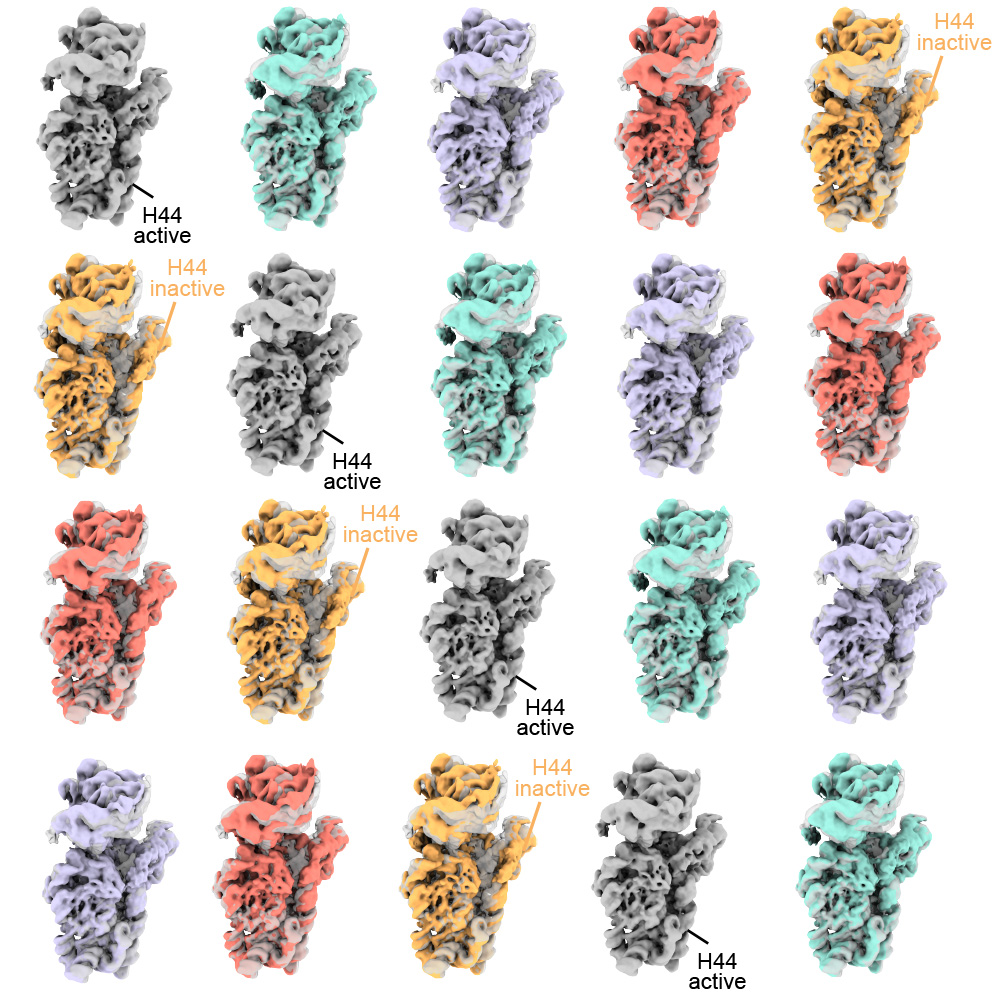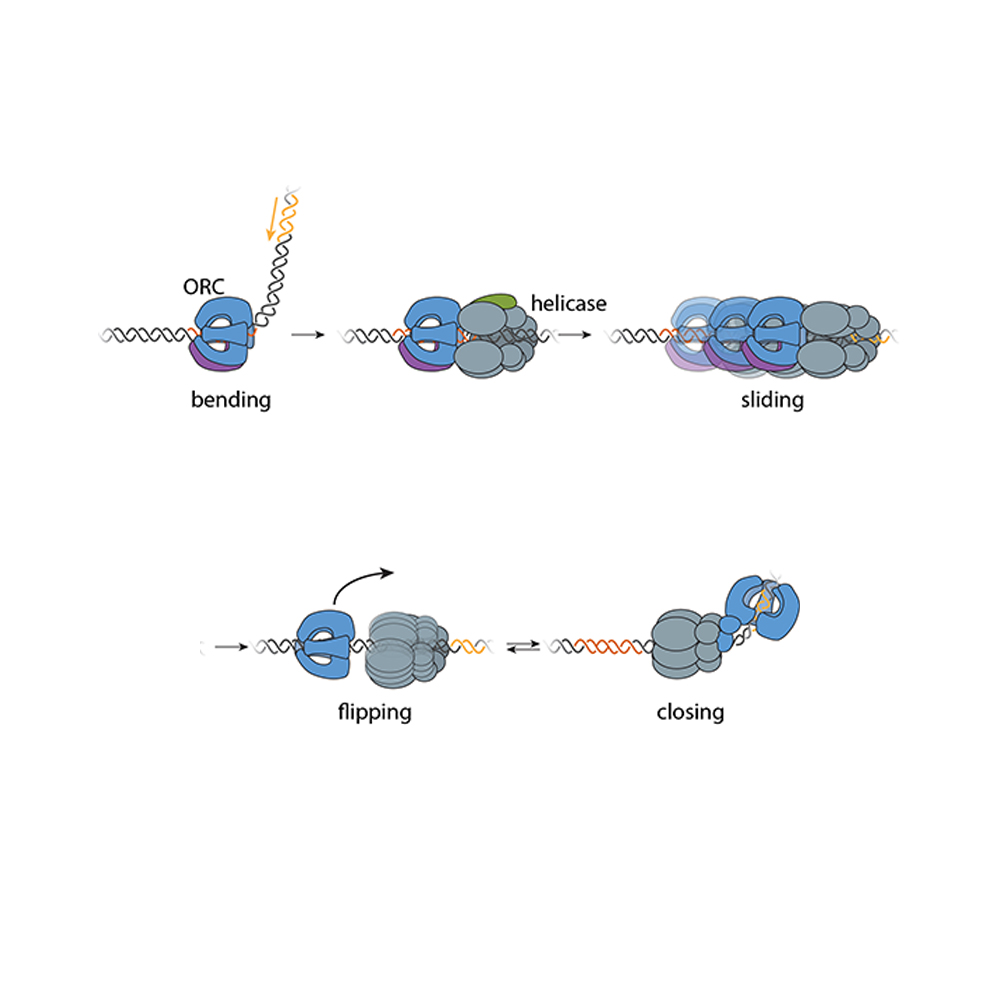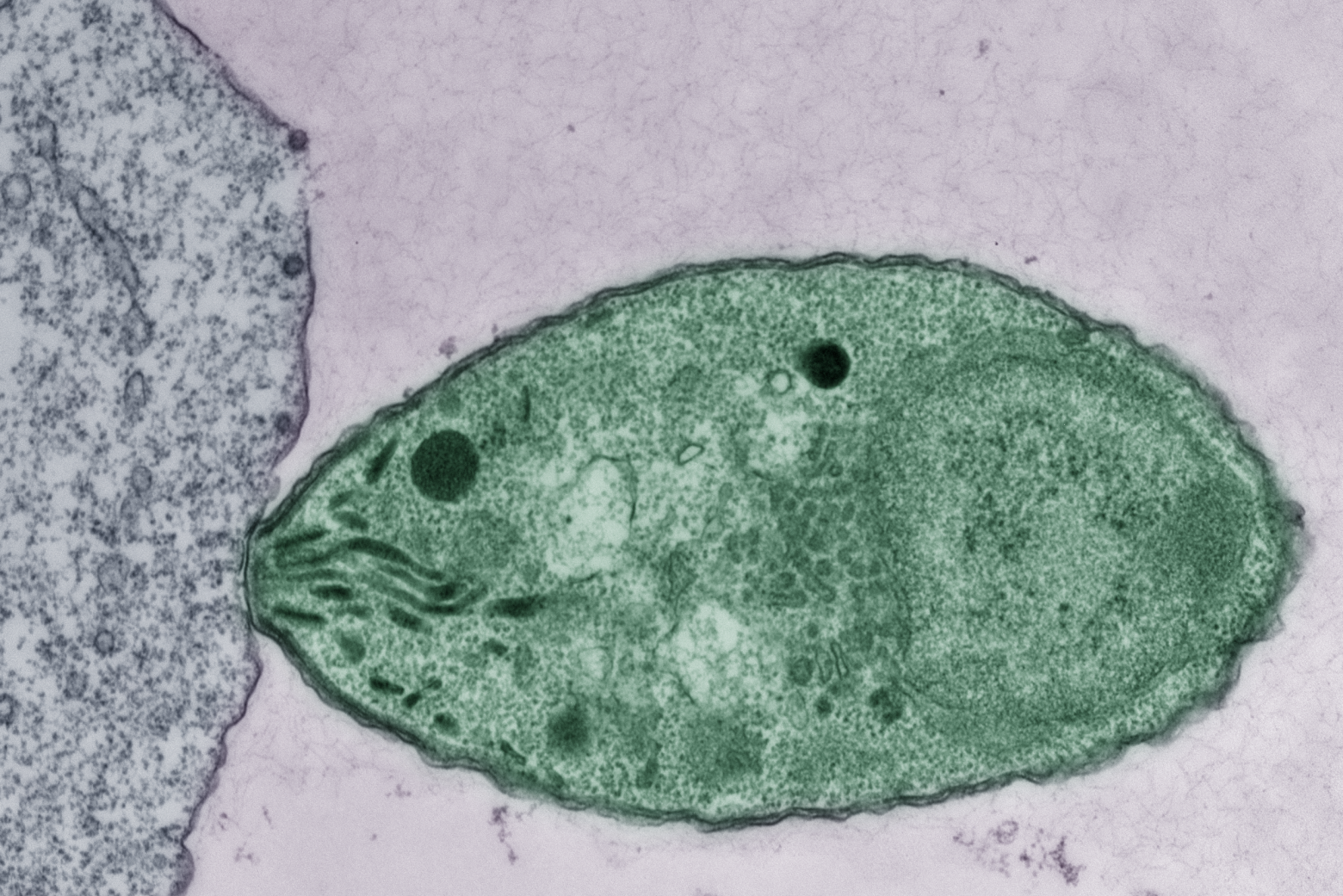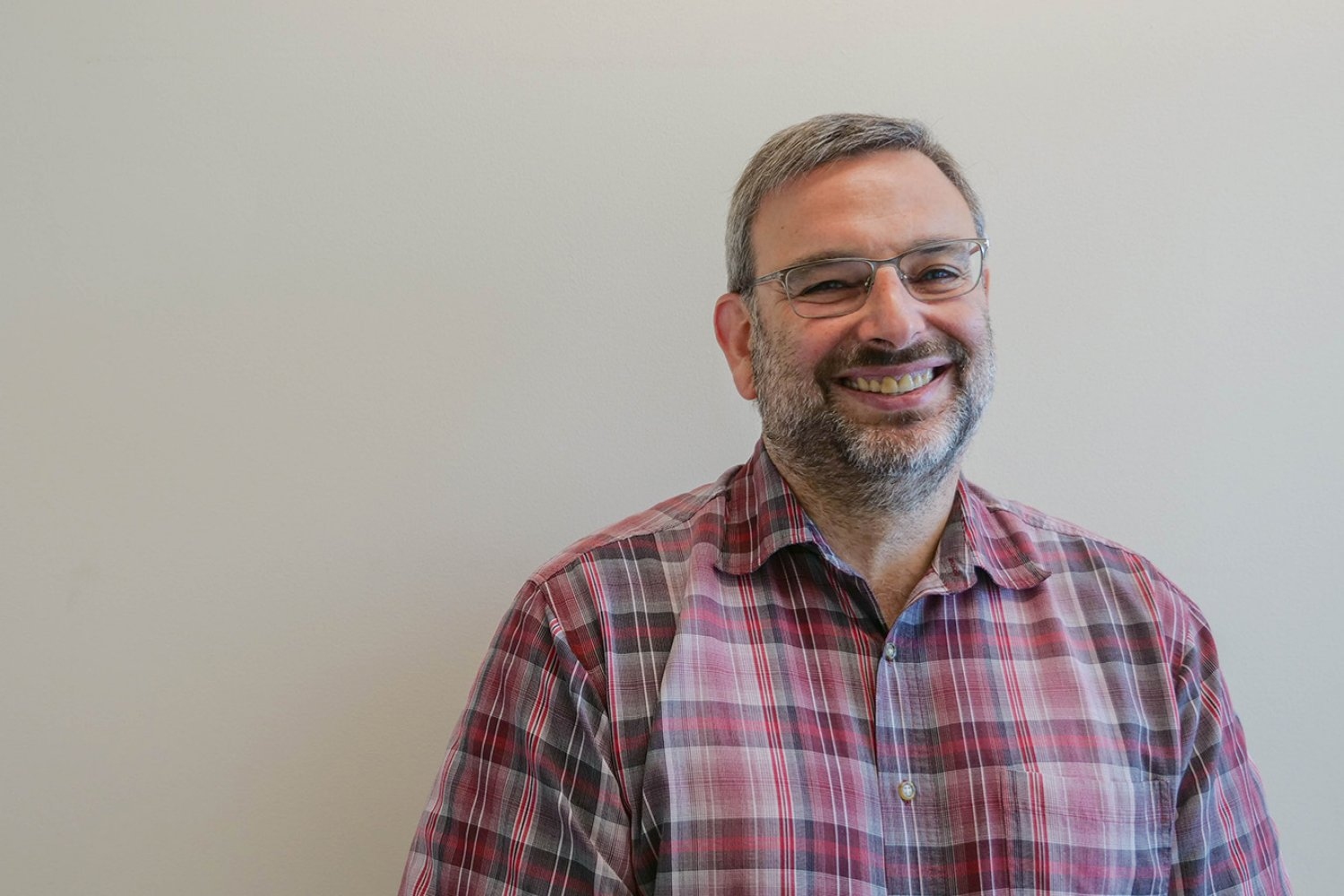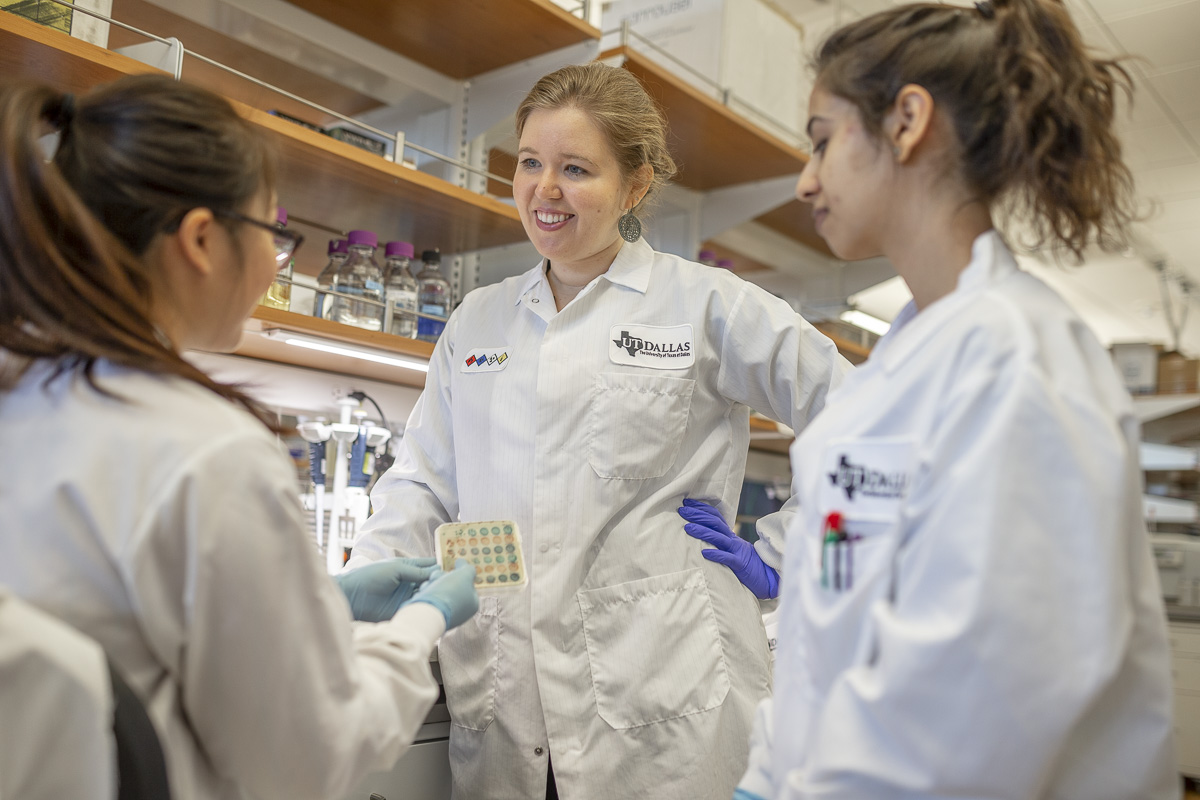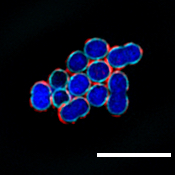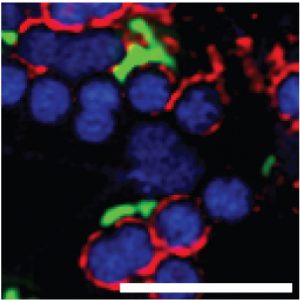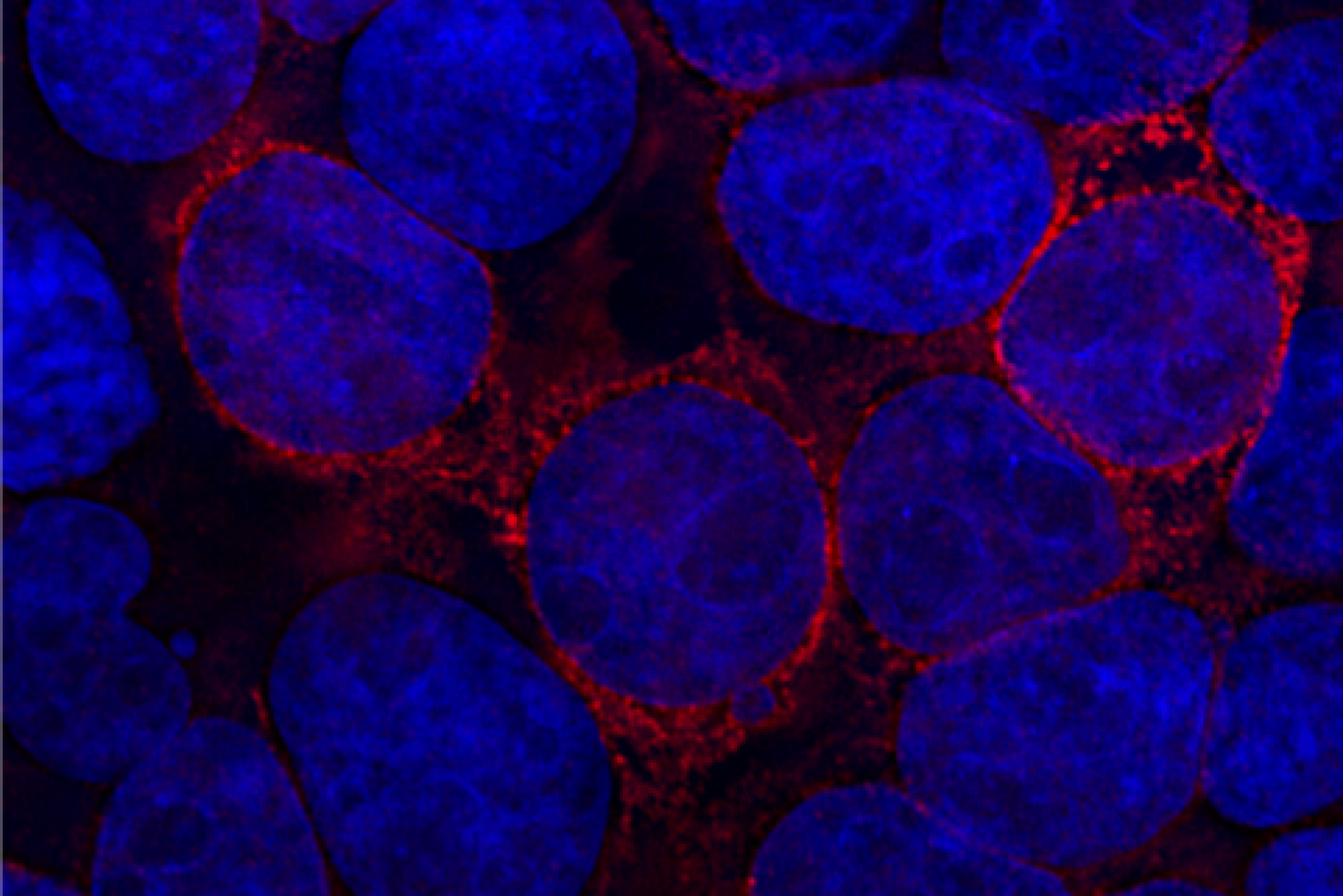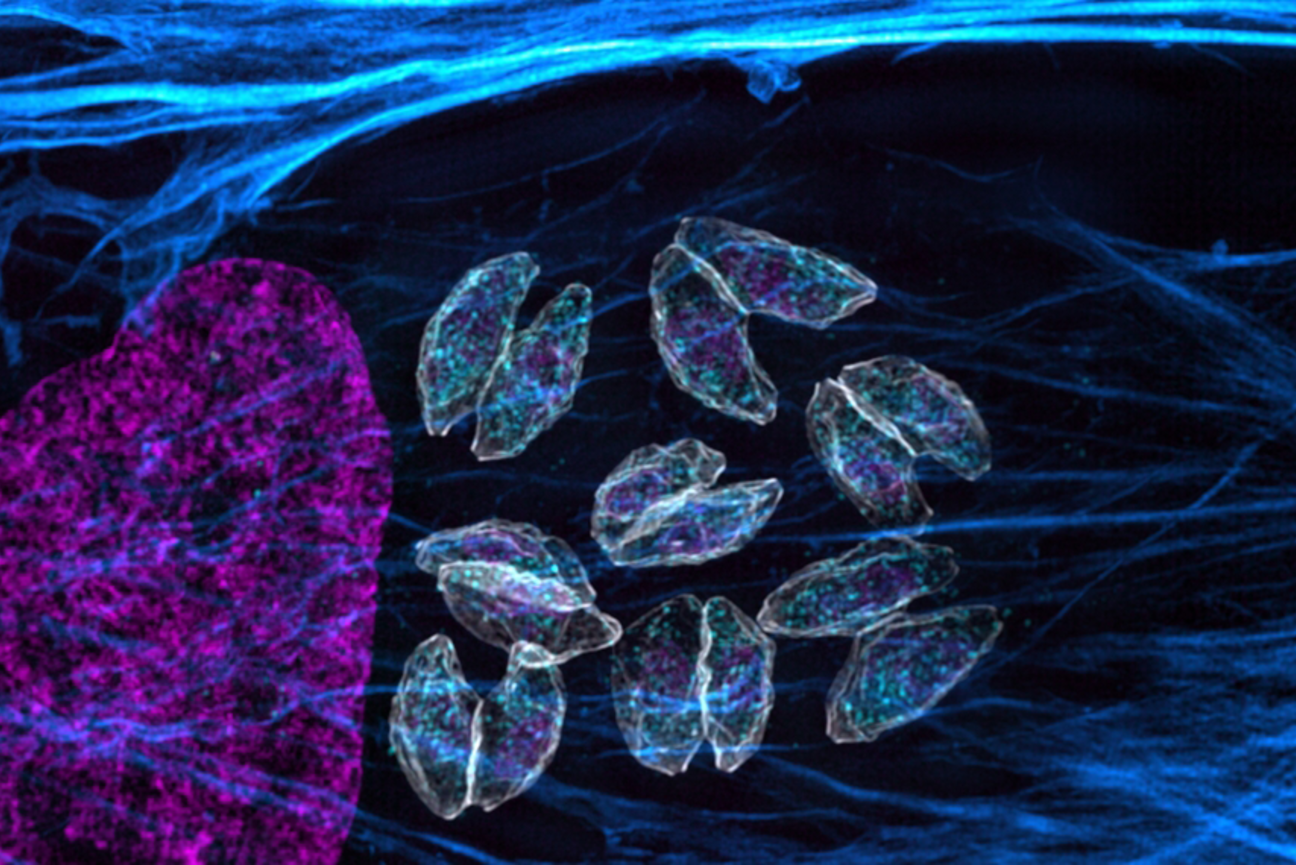
Researchers in the Lourido Lab performed the first genome-wide screen of Toxoplasma gondii in live hosts, revealing genes that are important for infection but previously undetected in cell culture experiments.
Greta Friar | Whitehead Institute
July 8, 2024
Apicomplexan parasites are a common cause of disease, infecting hundreds of millions of people each year. They are responsible for spreading malaria; cryptosporidiosis – a severe childhood diarrheal disease; and toxoplasmosis – a disease that endangers immune compromised people and fetuses, and is the reason why pregnant women are told to avoid changing cat litter. Apicomplexan parasites are very good at infecting humans and many other animals, and persisting inside of them. The more that researchers can learn about how apicomplexans infect hosts, the better they will be able to develop effective treatments against the parasites.
To this end, researchers in Whitehead Institute Member Sebastian Lourido’s lab, led by graduate student Christopher Giuliano, have now completed a genome-wide screen of the apicomplexan parasite Toxoplasma gondii (T. gondii), which causes toxoplasmosis, during its infection of mice. This screen shows how important each gene is for the parasite’s ability to infect a host, providing clues to genes’ functions. In the journal Nature Microbiology on July 8, the researchers share their approach for tracing lineages of parasites in a live host, and some specific findings of interest—including a possible anti-parasitic drug target.
From dish to animal
Researchers in Lourido’s lab previously developed a screen to test the function of every T. gondii gene in cells in a dish in 2016. They used CRISPR gene editing technology to make mutant parasites in which each lineage had one gene inactivated. The researchers could then assess the importance of each gene to a parasite’s fitness, or ability to thrive, based on how well the mutants missing that gene did. If a mutant died off, this implied that its inactivated gene is essential for the parasite’s survival.
This screen taught the researchers a lot about T. gondii’s biology but faced a common limitation: the parasites were studied in a dish rather than a live host. Cell culture provides an easier way to study parasites, but the conditions are not the same as what parasites face in an animal host. A host’s body is a more complex and dynamic environment, so it may require parasites to rely on genes that they don’t need in the artificial setting of cell culture.
To overcome this limitation, researchers in Lourido’s lab figured out how to repeat the T. gondii genome-wide screen, which their colleagues in the lab had previously done in cell culture, in live mice. This was a massive undertaking, which required solving various technical challenges and running a large number of parallel experiments. T. gondii has around eight thousand genes, so the researchers performed pooled experiments, with each mouse getting infected by many different mutants—but not so many as to overwhelm the mouse. This meant that the researchers needed a way to more closely monitor the trajectories of mutants in the mouse. They needed to track the lineages of parasites that carried the same mutation over time, as this would allow them to see how different replicate lineages of a particular mutant performed.
“This is an outstanding resource,” says Lourido. “The results of the screen reveal such a broader spectrum of ways in which the parasites are interacting with hosts, and enrich our perception of the parasites’ abilities and vulnerabilities.”
The researchers found 237 genes that contribute to the parasite’s fitness more in a live host than in cell culture. Many of these were not previously known to be important for the parasite’s fitness. The genes identified in the current screen are active in different parts of the parasite, and affect diverse aspects of its interactions with a host. The researchers also found instances in which parasite fitness in a live host increased when a gene was inactivated; these genes may be, for example, related to signals that the host immune system uses to detect the parasites. Next, the researchers followed up on several of the fitness-improving genes that stuck out as of particular interest.
Genes that make the difference in a live host
One gene that stuck out was GTP cyclohydrolase I (GCH), which codes for an enzyme involved in the production of the essential nutrient folate. Apicomplexans rely on folate, and so the researchers wanted to understand GCH’s role in securing it for the parasite. Cell culture media contains high levels of folate, and in this nutrient-rich environment, GCH is not essential. However, in a live mouse, the parasite must both scavenge folate and synthesize it using the metabolic pathway containing GCH. Lourido and Giuliano uncovered new details of how that pathway works.
Although previously GCH’s role was not fully understood, the importance of folate for apicomplexans is a well-known vulnerability that has been used to design anti-parasitic therapies. The anti-folate drug pyrimethamine was commonly used to treat malaria, but many parasites have developed resistance to it.
Some drug-resistant apicomplexans have increased the number of GCH gene copies that they have, suggesting that they may be using GCH-mediated folate synthesis to overcome pyrimethamine. The researchers found that combining a GCH inhibitor with pyrimethamine increased the efficacy of the drug against the parasites. The GCH inhibitor was also effective on its own. Unfortunately, the currently available GCH inhibitor targets mammalian as well as parasitic folate pathways, and so is not safe for use in animals. Giuliano and colleagues are working on developing a GCH inhibitor that is parasite-specific as a possible therapy.
“There was an entire half of the folate metabolism pathway that previously looked like it wasn’t important for parasites, simply because people add so much folate to cell culture media,” Giuliano says. “This is a good example of what can be missed in cell culture experiments, and what’s particularly exciting is that the finding has led us to a new drug candidate.”
Another gene of interest was RASP1. The researchers determined that RASP1 is not involved in initial infection attempts, but is needed if the parasites fail and need to mount a second attempt. They found that RASP1 is needed to reload an organelle of the parasites called a rhoptry that the parasites use to breach and reprogram host cells. Without RASP1, the parasites could only deploy one set of rhoptries, and so could only attempt one invasion.
Identifying the function of RASP1 in infection also demonstrated the importance of studying how parasites interact with different cell types. In cell culture, researchers typically culture parasites in fibroblasts, a connective tissue cell. The researchers found that parasites could invade fibroblasts with or without RASP1, suggesting that this cell type is easy for them to invade. However, when the parasites tried to invade macrophages, an immune cell, those without RASP1 often failed, suggesting that macrophages present the parasites with more of a challenge, requiring multiple attempts. The screen uncovered other probable cell-type specific pathways, which would not have been found using only model cell types in a dish.
The screen also highlighted a previously unnamed gene that the researchers are calling GRA72. Previous studies suggested that this gene plays a role in the vacuole or protective envelope that the parasite forms around itself. The Lourido lab researchers confirmed this, and discovered additional details of how the absence of GRA72 disrupts the parasite vacuole.
A rich resource for the future
Lourido, Giuliano, and colleagues hope that their findings will provide new insights into parasite biology and, especially in the case of GCH, lead to new therapies. They intend to continue pulling from the treasure trove of results—their screen identified many other genes of interest that require follow-up—to learn more about apicomplexan parasites and their interactions with mammalian hosts. Lourido says that other researchers in his lab have already used the results of the screen to guide them towards relevant genes and pathways in their own projects.
“This is an outstanding resource,” says Lourido, who is also an associate professor of biology at MIT. “The results of the screen reveal such a broader spectrum of ways in which the parasites are interacting with hosts, and enrich our perception of the parasites’ abilities and vulnerabilities.”


